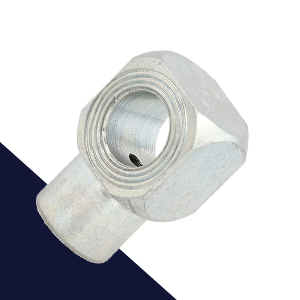erover82
Well-known member
Several LR engines over the years featured baffles prior to the positive crankcase ventilation port to prevent excess oil flowing through the separator. Tdi engines however did not, so I made one.



Used rubber gasket dressing on all rubber gaskets including the valve cover to give the best chance at a long leak-free life.

Remember this?
Well the new oil pump arrived, mounted up fine, and I was able to move on.

Moving on to the front side, I installed the timing belt with all new OEM components and set the valve/fuel timing. If you look closely you'll see yet another threaded insert going in. Other than the time suck, I don't mind them as they're a permanent fix that's stronger than the native material.

Britpart XS parts are generally good and these Pro Flow pumps appear to be no exception.

Upgraded the old 45 amp alternator to this 100A Range Rover unit and used a new billet aluminum bracket from RN.

With most front components fitted it was time to torque down the crankshaft bolt.

Trick for holding the crankshaft steady.

Used rubber gasket dressing on all rubber gaskets including the valve cover to give the best chance at a long leak-free life.
Remember this?

This was aggravating, to say the least. The new shaft was not properly engaged and so resulted in one oil pump mounting ear shearing off as it was tightened. I immediately shuddered at the thought of what a new genuine oil pump might cost from such a stupid mistake, and how many more weeks I'd have to wait for it, yet again.
Well the new oil pump arrived, mounted up fine, and I was able to move on.
Moving on to the front side, I installed the timing belt with all new OEM components and set the valve/fuel timing. If you look closely you'll see yet another threaded insert going in. Other than the time suck, I don't mind them as they're a permanent fix that's stronger than the native material.
Britpart XS parts are generally good and these Pro Flow pumps appear to be no exception.
Upgraded the old 45 amp alternator to this 100A Range Rover unit and used a new billet aluminum bracket from RN.
With most front components fitted it was time to torque down the crankshaft bolt.
Trick for holding the crankshaft steady.
